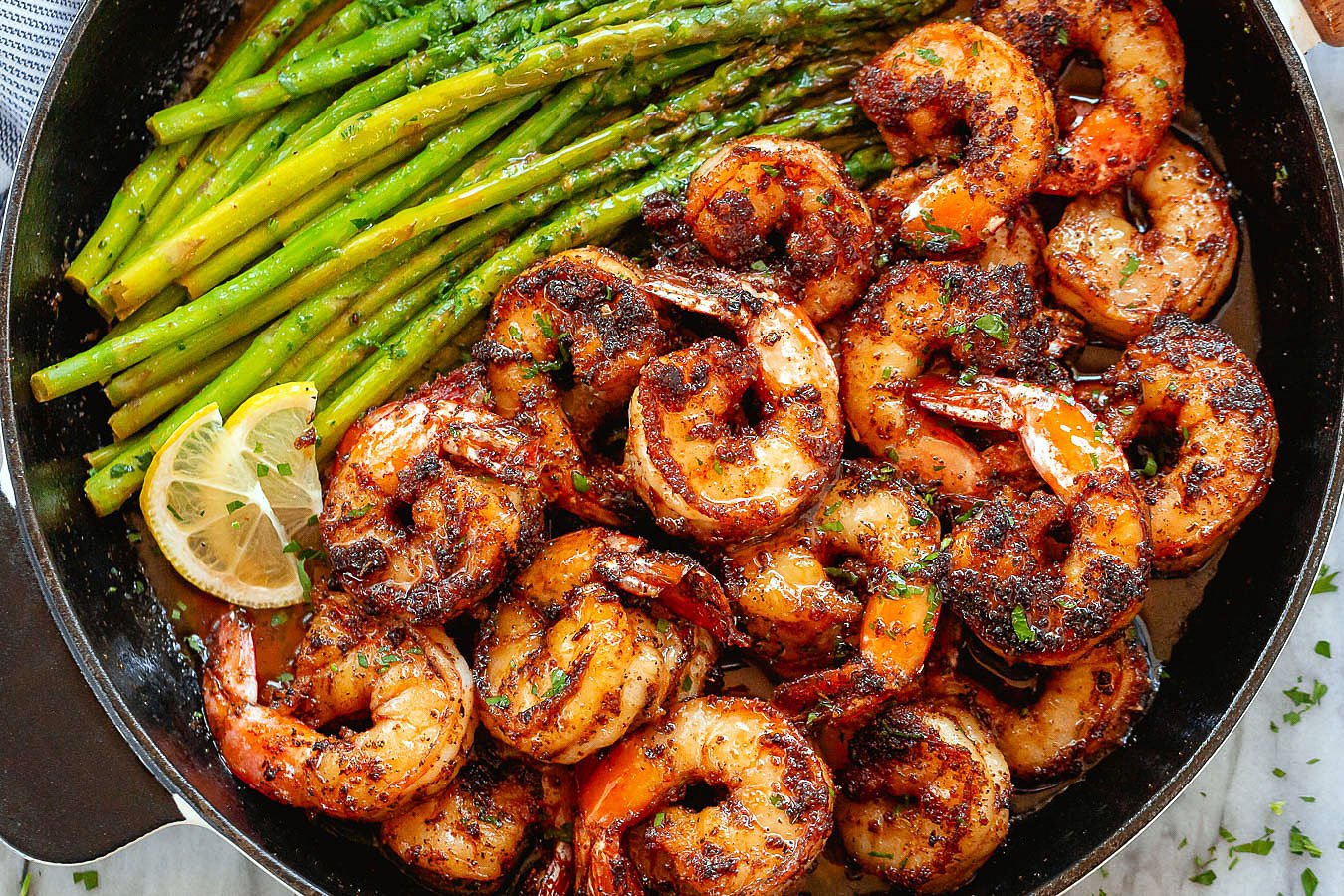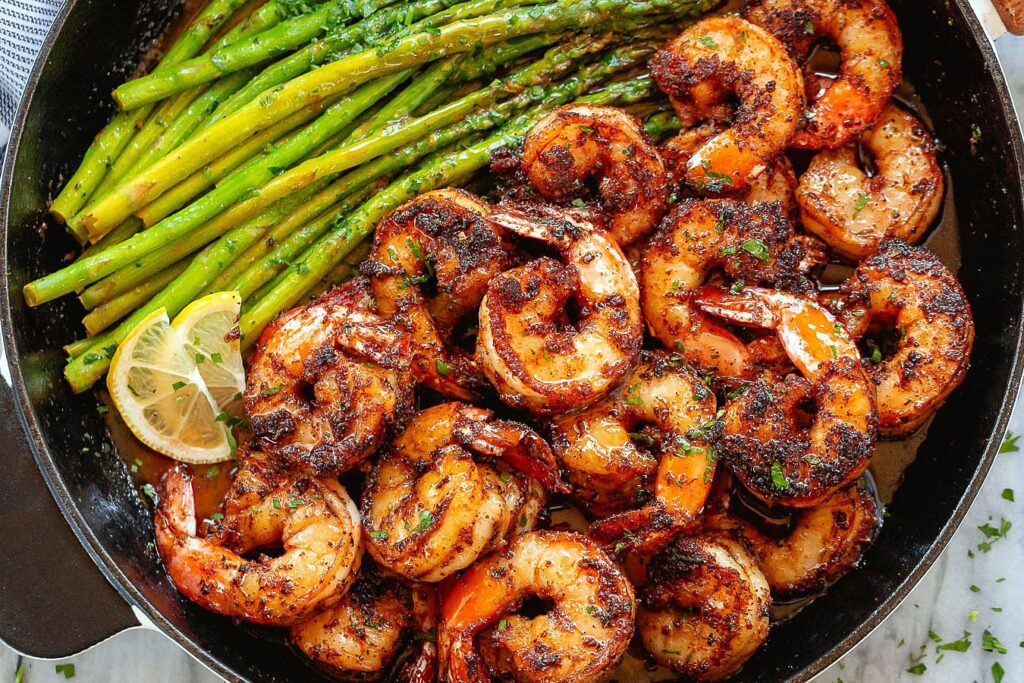
Ever wonder about the nutrient-packed seafood gem that is shrimp? Often relegated behind power players like salmon and tuna, shrimps, my friends, can emerge as the dark horse in the race of superfoods.
Bursting with vital nutrients and a multitude of health benefits, they’re way too underrated for what they bring to our plates and palates. They offer so much, yet ask for so little – just a few minutes on the grill or a quick toss in the pan, and your delicious, nutritious meal is ready!
In Summary
Shrimp: The Nutritional Powerhouse You’ve Been Overlooking
Have you been ignoring shrimp in your quest for a wholesome diet? If that’s the case, it’s high time you turn your gaze towards these mini nutrition dynamos. Not only do these tiny crustaceans pack a flavorful punch, but they’re also chock-full of vital nutrients your body needs. Let’s commence our deep dive into the health-giving world of shrimp.
Calories and Protein
Just imagine – a six-ounce serving of shrimp delivers a whopping 39 grams of protein. But the best part? It only clocks in at 202 calories. Sounds like a fabulous deal, doesn’t it? Not too many marine treats can offer you so much nutritional value for such a moderate calorie count. Protein, as we know, is essential for repairing body tissues and helping with muscle growth.
Vitamins & Minerals
Shrimp does a pretty spectacular job on the vitamins and minerals front, too. You get a good dose of vitamin B12, which is a non-negotiable for nerve function and blood cell health. But that’s not all. There’s also selenium, a powerful antioxidant known for combating harmful free-radicals, linked with chronic diseases. The amounts of iodine, choline, copper, and zinc present in shrimp are noteworthy as well.
Omega-3 Fatty Acids
Yes, you read that right! Shrimp, just like their high-profile cousins—salmon and tuna—are great sources of Omega-3 fatty acids. These heart-friendly fats are a boon to your cardiovascular health. They’re also instrumental in promoting brain development and reducing inflammation.
The Quiet Achiever
In a way, you could call shrimp the unsung hero of the seafood world. It flies under the radar, quietly delivering all those essentials nutrients. It’s nutrient-dense, calorie-light, and oh-so-delicious! Ready to rethink your meal prep?
Shrimp Safety Precautions: How to Handle and Store Them Properly
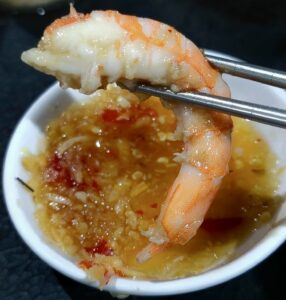
When it comes to shrimp, safety is a priority. These precious pearls of the sea require diligent handling and storage to maximize their quality and minimize the chance of foodborne illness.
Choosing Shrimp with Utmost Caution
Purchasing shrimp is your first line of defense. Look for shrimp that is either frozen or well-chilled. Shrimp should smell fresh and slightly salty, much like the sea – a strong, fishy odor is a big no. Whole shrimp should have clear eyes and firm bodies, while peeled shrimp should be translucent and shiny.
Proper Storage of Shrimp
Once you get your shrimp home, it’s very crucial to keep them cold until you’re ready to use them. Here comes the golden rule: store them in the coldest part of your refrigerator. If you’re not planning to use the shrimp within a day or two, freeze them. Store them in airtight bags with all the air removed to prevent freezer burn. Frozen shrimp can then be thawed in the refrigerator when you’re ready to use them.
Safe Preparation Precautions for Shrimp
When it comes to preparation, hygiene is a must. Always wash your hands and clean your surfaces before and after handling raw shrimp. Likewise, never use the same cutting board and knife for raw shrimp and other ingredients without thoroughly washing them first.
Ensuring Correct Shrimp Cook Time
Isn’t it daunting to undercook or overcook your savory shrimp? It needn’t be. A standard rule is to cook shrimp until it’s opaque throughout, generally just until they turn pink. Remember, overcooked shrimp can become tough, while undercooked shrimp can pose a risk for foodborne illnesses.
Embracing these safety precautions ensures safe, wholesome shrimp ready to shine in your dishes, enriching your palate, and protecting your health.
Why Shrimp Should Be a Staple in Your Healthy Diet
Let’s talk about why shrimp, with all its impressive nutritional value, deserves to take center stage in your healthy diet. You might be asking, “Why shrimp?” Well, let’s delve into it!
Nutrient-Dense Choice
First and foremost, shrimp is a nutrient powerhouse. It offers a diverse range of essential nutrients – think vitamins, minerals, proteins and beneficial fats. Reflect on this: in just one serving (approximately 3 ounces), you can easily tick off your daily intake of selenium and vitamin B12. Now, isn’t that fantastic?
Low in Calories, Rich in Protein
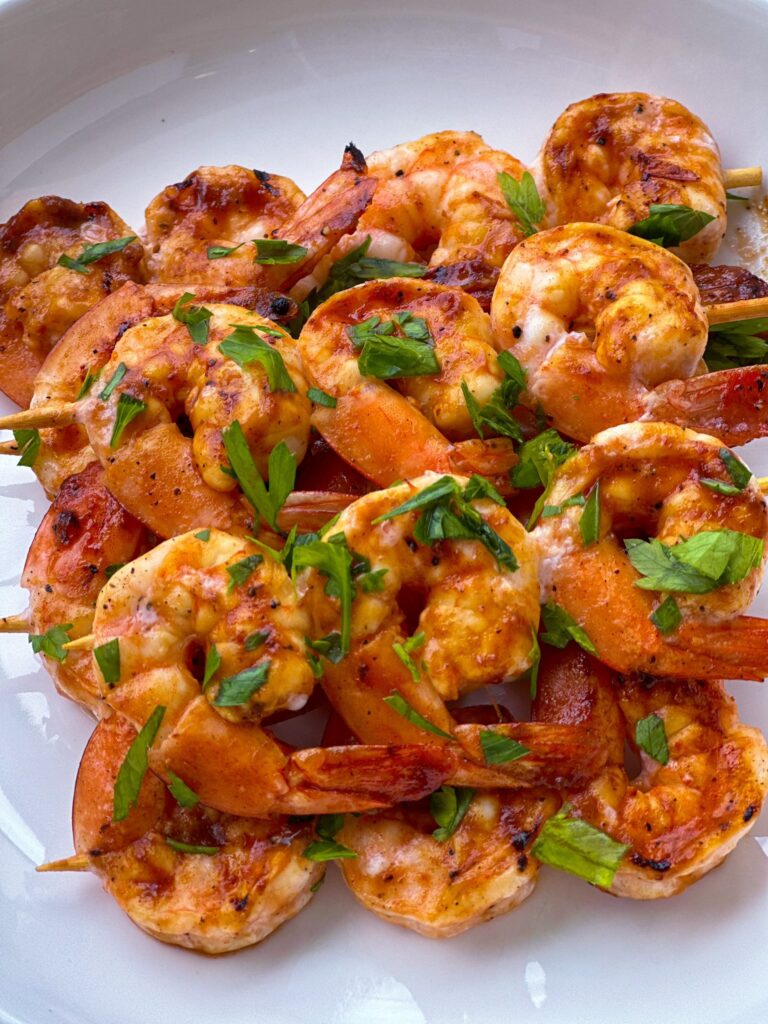
Shrimp is a top-notch pick for diets centered around managing or losing weight. “Why so?”, you might ponder. Here it is: shrimp serves up plenty of protein but keeps the calorie count comparatively low. Now, that’s a one-two punch for both satiety and slimming down!
Heart-Healthy
Do you fancy keeping your heart in tip-top shape? Well, who doesn’t! Shrimp delivers a healthy dose of omega-3 fatty acids—those acclaimed fats that are the Allies of your heart health. On top of that, shrimp has been linked to improving various factors for cardiovascular health, including reducing bad cholesterol levels. Say hello to heart health!
Power-Up Your Immunity
Another reason why shrimp deserves a standing ovation in your diet playbook is its role in bolstering immunity. Packed with antioxidants such as selenium and astaxanthin, shrimp helps your body ward off harmful free radicals and boosts your immune defenses. Do we hear a round of applause for shrimp?
The Surprising Link Between Shrimp and Brain Health
Now, brace yourself as we dive into a fascinating aspect of shrimp nutrition that you might not have been expecting — its significant influence on brain health. Yes, you read that right! This tiny, delectable seafood plays a big game when it comes to boosting your cerebral well-being.
The Power of Omega-3 Fatty Acids
If you’ve ever wondered what’s behind the magical link between shrimp and brain health, look no further than Omega-3 fatty acids. These polyunsaturated fats — specifically, eicosapentaenoic acid (EPA) and docosahexaenoic acid (DHA) — are key contributors to brain function and development.
Shrimp is chock-full of these fabulous fatty acids. Consuming them not only bolsters cognitive health, but may even ward off mental decline as we age. Doesn’t that make your seafood platter seem even more tantalizing?
B12 and Your Brain
But hold on — the goodness doesn’t stop there! Shrimp also packs a punch with vitamin B12, a vital nutrient for maintaining brain health and preventing brain shrinkage. Vitamin B12 plays an important role in nerve function. Low levels of this essential vitamin can lead to a host of cognitive problems, such as memory loss and brain fog. But guess what? A single serving of shrimp can provide a whopping 78% of your daily recommended intake of Vitamin B12. Isn’t that a whole lot of brain-boosting power in one delicious package?
Antioxidants and Their Role
Let’s not forget about antioxidants, either. Shrimp is rich in astaxanthin, a potent antioxidant that has been linked to lower levels of inflammation and neurodegenerative diseases. Astaxanthin is what gives shrimp its vibrant color. Not only does it make your shrimp cocktail look tantalizing, it is also working overtime to keep your brain in tip-top shape.
Shrimp: A Protein-Rich Superfood for Muscle Building
So, you’re on a quest to build muscle and are searching for foods that can supercharge your efforts? Look no further than shrimp, my friend! This tiny crustacean, despite its unassuming size, is the mystical pearl of the ocean when it comes to protein.
Shrimp: The Unsung Hero of High-Protein Foods
Did you know that shrimp is one of the most protein-dense foods you can find? Touted as a complete protein, shrimps contain all nine essential amino acids that the human body cannot generate on its own. For every handful of shrimps, you’re getting about 20 grams of protein, and what’s even more impressive? This comes hand in hand with a minimal amount of fat. Now, how’s that for efficiency?
Adding Bulk Without the Unwanted Weight
For many of us, weight gain stands in our path to muscle building. We’ve all heard that phrase “bulk up” in gym chatter, haven’t we? Thankfully, with shrimp on your side, you can build that lean, muscular physique without the excess baggage of unwanted fat. Shrimp are low in calories with virtually no carbohydrate content, making them an ideal dietary addition for those looking to sculpt their bodies to perfection.
Optimal Recovery with Shrimp
Let’s not forget about recovery, a crucial component of muscle building. Protein-rich foods like shrimp contribute to post-workout muscle repair, expediting your recovery process! Bit of a wonder, isn’t it? Who would have imagined that such a small creature could give such an immense push towards your fitness goals?
An Aquatic Ally for Muscle Building
So, shrimp isn’t just about great cocktail parties and beachside barbecues. When it comes down to it, they pack a potent punch of protein ready to elevate your muscle-building journey. And the plus side? They are versatile and quick to prepare – perfect for a muscle-building meal when you’re short on time. Isn’t it time you introduced this marine marvel into your fitness regimen?
Shrimp and Weight Management: Can It Help You Shed Pounds?
When you’re setting out on a weight loss journey, it’s important to fill your plate with foods that are both tasty and satisfying. Ensconced in that category, hidden away like a pearl in a oyster, is the humble shrimp. Can it really help in managing your weight? The answer is a resounding yes!
A Low-Calorie, High-Protein Powerhouse
Imagine a food that’s so lean, it would make a marathon runner blush! That’s shrimp for you. A 3-ounce serving of shrimp packs in a whopping 18 grams of protein and only contains about 85 calories. Truly, it seems like our friend, the shrimp, is designed to be a dieter’s dream!
A Complete Protein
Did you know that shrimp is considered a complete protein? It contains all nine essential amino acids your body needs to function properly. Unlike some plant-based sources of protein, shrimp delivers everything the body needs without any excess baggage! High amounts of protein can also help control appetite, adding to its weight management benefits. Who would’ve thought that this small, shell-dwelling aquatic creature could pack such a punch?
High in Iodine
Not only does shrimp offer a powerful protein punch, it also provides a good dose of iodine. Wondering why that matters for weight loss? Well, iodine is critical for a healthy thyroid, and your thyroid helps regulate your metabolism. Regularly including shrimp in your menu could give your metabolism a boost and promote a healthy body weight.
Healthy, Satiating Fats
Now, some of you may be wondering, “But doesn’t shrimp contain fats?” Indeed, it does. But have no fear, these are the good kind of fats. The omega-3 fatty acids in shrimp are heart-healthy and can help you feel full longer. The result? Less of a chance you’ll reach for unhealthy snacks.
Striking the perfect balance in your diet, managing your weight, and taking care of your overall health does seem like an uphill task, doesn’t it? Well, not if you have the humble shrimp in your pantry! So, next time when you are wondering about a nutritious, weight-management-friendly addition to your meal, remember the shrimp. Perhaps, Winnie the Pooh made the wrong choice in honey. Maybe, the real gold is in the sea!
Shrimp vs. Other Seafood: Which Is the Better Nutritional Choice?
How does shrimp, our unsung hero, stack up in this grand seafood lineup? Let’s dive right in, shall we?
Shrimp, The Low-fat Delight
Shrimp deserves a standing ovation for its unbelievably low fat content. Nestled in the delectable layers of this shellfish is a mere 1 gram of fat per 100 grams. If you’re scouting for low-fat protein sources, shrimp just might be your hidden treasure.
Lobsters, the Cream of the Crop?
What about the prestigious Lobster? No doubt it’s a stellar seafood, packed with protein. However, it brings a higher fat content to the table, with 1.5 grams of fat per 100 grams, edging out shrimp in the low-fat arena. This doesn’t make lobster a less nutritious choice, but if fat content is your concern, then shrimp takes the crown.
Salmon, A Fatty Acid Haven
Let’s venture towards the omega-rich waters of Salmon. Known for its abundance in essential fatty acids, salmon stands as a powerhouse of omega-3s. While shrimp does have these healthy fats, it doesn’t rival salmon in this regard. However, this extra omega content does increase salmon’s total fat content. For those watching their fat intake, shrimp offers an excellent balance.
Tuna, A Protein Powerhouse
Next in line, we have Tuna, internationally recognized for its impressive protein concentration. Tuna can boast a whopping 26 grams of protein per 100 grams, leaving even beef behind. However, don’t rule out shrimp yet. Shrimp’s protein content is still pretty remarkable, clocking in at 20 grams per 100 grams, especially considering its low calorific impact.
In the grand scheme of seafood nutrition, each contender brings unique attributes to the table. Your choice ultimately hinges on your nutritional goals and dietary requirements. Looking to lower your fat intake? Shrimp’s your pick. Seeking an omega-3 boost? Consider including salmon.
Understanding the Different Types of Shrimp: What You Need to Know
This section takes a deep dive into understanding the differences between various types of shrimp and what you need to know for your healthy shrimp-filled voyage.
The Colossal and Pint-Sized: Determining Size and Count
We’ll kick off our seafood soiree with one of the most prominent features of shrimp: their size. Shrimp come in a plethora of sizes, from the petite “small” count (50-60 shrimps per pound) to the formidable “colossal” size (10 or less per pound). The “count” is the number of shrimp in one pound, and it can vary greatly.
The Gamut of Shrimp Varieties
We have more than just size differences! The flavor, texture, and colors can differ significantly among shrimp types. Let’s reveal the magic behind some of these labels:
- White Shrimp: They are the hidden champions of versatility, quite literally blending with any concoction you may devise. While their sweet, mildly salty flavor is a luxury in itself, their firm texture just amplifies the eating experience.
- Pink Shrimp: Remember the feeling when you watched your favorite candy unwrapped? That’s precisely the allure of pink shrimp: satiny, sweet, and significantly tender. Their vibrant pink hue stands as a testament to their delightful flavor and softer texture.
- Brown Shrimp: If you are smitten with robust flavors, brown shrimp are your best bet. They stand out with their more assertive, slightly iodine flavor profile and firm texture.
- Tiger Shrimp: Characterized by their dark, striped shells, tiger shrimp pack an exquisite sweet flavor and a delightfully dense texture. They are noticeably larger, making them ideal for dishes where shrimp take center stage.
Wild vs. Farmed
Last but not least, let’s look at another crucial distinction: wild-caught versus farmed shrimp. What’s the difference, you ask? In many cases, this distinction boils down to environmental impact and nutrition.
Wild-caught shrimp come straight from their natural habitats (ocean or freshwater). They have a more diverse diet, which often reflects in a more nuanced flavor and a slightly greater variety of nutrients. However, the sustainability of fishing practices and the health of shrimp populations are serious concerns.
Farmed shrimp, on the other hand, are cultivated in controlled environments. They are more readily available and considerably cheaper. However, aquaculture practices can be controversial due to environmental issues and potential antibiotic use. Thus, it’s important to seek out suppliers who use responsible farming practices.
Shrimp Cooking Tips and Tricks for Maximum Nutrition
End your shrimp dietary journey with a bang by mastering the art of cooking shrimp without compromising its nutrient value. Here are some fantastic cooking tips and tricks to create delicious and nutritious shrimp dishes:
1. Cooking Shrimp to Perfection
Let’s begin with a commonly asked question: How long does it take to cook shrimp? Too short and it’s undercooked; too long and you lose out on both texture and nutrition.
Here’s a pro-tip: shrimp changes color when it’s cooked. It turns to a lovely pink, and the ‘vein’ on its back becomes opaque. Ideally, this takes around 2 to 3 minutes per side on medium heat. If you’re grilling or broiling, keep a close eye to avoid overcooking.
2. The Power of Marinades
Enhancing flavor doesn’t have to come at the cost of nutrition. Marinades can be a great way to introduce other nutrient-dense ingredients to your shrimp. Components like olive oil, citrus juice, fresh herbs, and spices can add strong and delightful flavors while keeping up with your health goals.
3. Steaming for Maximum Nutrition
If you’re looking to get the most health benefits from your shrimps, steaming is the way to go. This cooking method helps to optimize the nutrient preservation as it requires no additional fat and limits nutrient loss into cooking water. Note: While the shrimp might seem less flavorful compared to its fried or sautéed counterparts, pairing steamed shrimp with a nutrient-dense sauce or garnish can do wonders for your taste buds and your health!
4. Grilling and Skewering
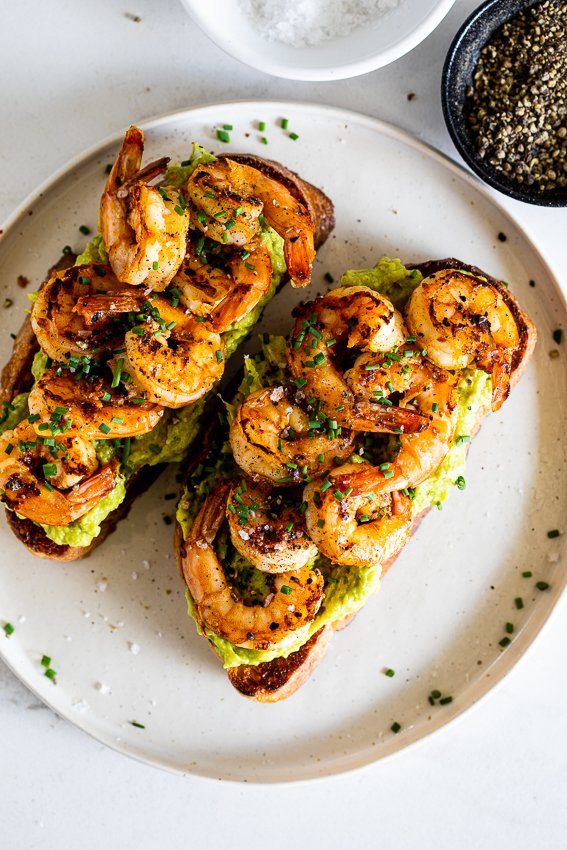
Who doesn’t love a good barbeque? Grilling shrimp can provide a wonderful smoky undertone to its naturally sweet flavor, and skewering shrimp can make for an easy and controlled flip on the grill. Make sure to lightly oil your grill to avoid sticking and to achieve those sought-after grill marks.
5. Sautéing and Stir-Frying
Fancy a quick shrimp stir-fry? Keep in mind that the key to a nutritious stir-fry lies in the oil used. Opt for healthy oils such as olive or avocado oil and remember – a little goes a long way!
6. Mastering the Art of Shrimp Scampi
Shrimp Scampi is a classic that never goes out of style, but did you know that it can be made healthy too? Swap out butter for olive oil and load up on garlic and lemon juice to make a healthier yet tasty version of this beloved dish.
Remember: Whether you’re a novice cook trying out shrimp for the first time or a seasoned chef experimenting with a new recipe, it’s all about balancing flavor and nutrition. Happy cooking!
